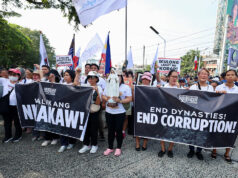New BSP moves to help avert bubbles
CLOSER OVERSIGHT by the Bangko Sentral ng Pilipinas’ (BSP) of two sectors with “strong loan growth” will boost its capability to detect “blind spots” where bubbles could form, Fitch Ratings said in a note on Thursday.
“Recent moves to enhance oversight of property lending and project finance in the Philippines could make it easier to spot pockets of excess in these high-growth sectors,” Fitch said.
The Monetary Board last week strengthened reporting requirements on banks’ real estate and project finance exposure.
Starting June 30 next year (though there will be a “pilot run submission” for the quarter ending March 31) banks will have to report specific information on real estate loans involving mid- and high-end housing units, as well as socialized and low-cost housing.
Moreover, they should give details of commercial real estate loans in terms of specific structures being financed such as residential units, office buildings, malls and factories.
These measures add to the existing regulatory framework governing real estate exposures of banks that includes a cap on real estate loans equivalent of 20% of total loan portfolio, net of interbank loans, as well as real estate stress test limits.
Also, universal and commercial banks will have to report on their project finance exposure, including specifics on type of infrastructure involved.
“This report will enable the BSP to obtain a better grasp of the extent and quality of U/KB exposures to project finance, especially since demand for project finance is expected to increase and gain further traction as the country moves toward achieving its infrastructure goals,” the BSP had said in a Sept. 22 press release on its latest moves.
Noting that “[t]he new ruling by the Bangko Sentral ng Pilipinas targets two sectors where vulnerabilities could form amid strong loan growth,” Fitch said that “[g]reater monitoring of these lending activities has been hampered by limitations in system-wide data, and the new initiatives could help to address this, especially if more information is made available publicly.”
The government of President Rodrigo R. Duterte, who assumed office at the end of June 2016, has embarked on an P8.44-trillion “Build, Build, Build” program that will see public spending on infrastructure increase to P1.899 trillion, equivalent to 7.45% of gross domestic product (GDP), when the current administration ends its six-year term in 2022 from a programmed P847.22 billion, or 5.32% of GDP, this year.
By doing this, the current government hopes to prod GDP growth to 7-8% annually from next year to 2022 from a targeted 6.5-7.5% this year, 2016’s actual 6.9% and an average of 6.2% in 2010-2015 under former president Benigno S. C. Aquino III.
That pace of growth, in turn, is targeted to slash unemployment rate to 3-5% by 2022 from 2016’s 5.5% and poverty incidence to 13-15% from 21.6% in 2015.
“Nevertheless, prudential standards have not been tightened under the new measures and the regulator still faces the challenge of discerning unhealthy risk-taking from productive lending that supports economic growth,” Fitch noted in its note yesterday.
“Sustained rapid loan growth could create risks to the banking sector and the broader economy if left unchecked,” it added.
“Closer central bank scrutiny may make banks more cautious in lending to these sectors, but it does not amount to regulatory tightening to curb growth.”
RISK
Fitch noted that real-estate loans, which account for just over a fifth of total bank lending, have risen by an average of 21% over the last four years.
“High system-wide loan growth could raise the risk of a credit bubble if it continues,” it added, noting, among others, that bank loans have grown about double the pace — around 18% year on year on average — of nominal GDP in the last four years.
“Bank credit to the private sector remains relatively low, at 45% of GDP at end-2016, but this ratio has risen from 32% at end-2011 and is likely to climb further in 2017,” the debt watcher said.
Most banks, it added, “appear to have maintained acceptable lending standards over this period” and the overall nonperforming loans ratio “has remained benign at around two percent…”
“But in such a strong growth environment, there is a risk that ‘blind spots’ may develop, where downside risks may not be adequately priced into lending decisions,” the credit rater said.
“Risks could crystallize into losses if, for example, the economy slows or interest rates rise significantly.” — Elijah Joseph C. Tubayan



